A step-by-step guide on how to onboard a Regular Gateway Account.
Prerequisites
Your user will need to have the 'zero:merchant:create' and 'zero:merchant:update' (Manage merchant accounts) permissions to be able to board new merchant accounts; this also applies to your agents so they can board new merchant accounts under their portfolio. Primary users have this permission set by default and it cannot be removed.
How to Onboard an Interchange Plus or Traditional Merchant Account
1. Log in to your Partner Portal and head over to Merchants → New Merchant.
General
2. Select your Organizational Details, ISO and Agent Office.
3. Enter the merchant's configuration:
- The MID assigned to merchant by processor.
- The Legal Business Name.
- The DBA Name entered here will be what the merchant sees when they log in to their merchant portal.
- Select the Merchant Category Code (MCC) - generally, the MCC code will be on VAR sheets, if not, the merchant will need to contact their credit card processor to disclose the MCC code that’s been assigned to their business.
- MCC codes are determined based on the merchants business type and the products or services they provide. A MCC is assigned to a merchant by the card company when the business first starts accepting cards as a form of payment.
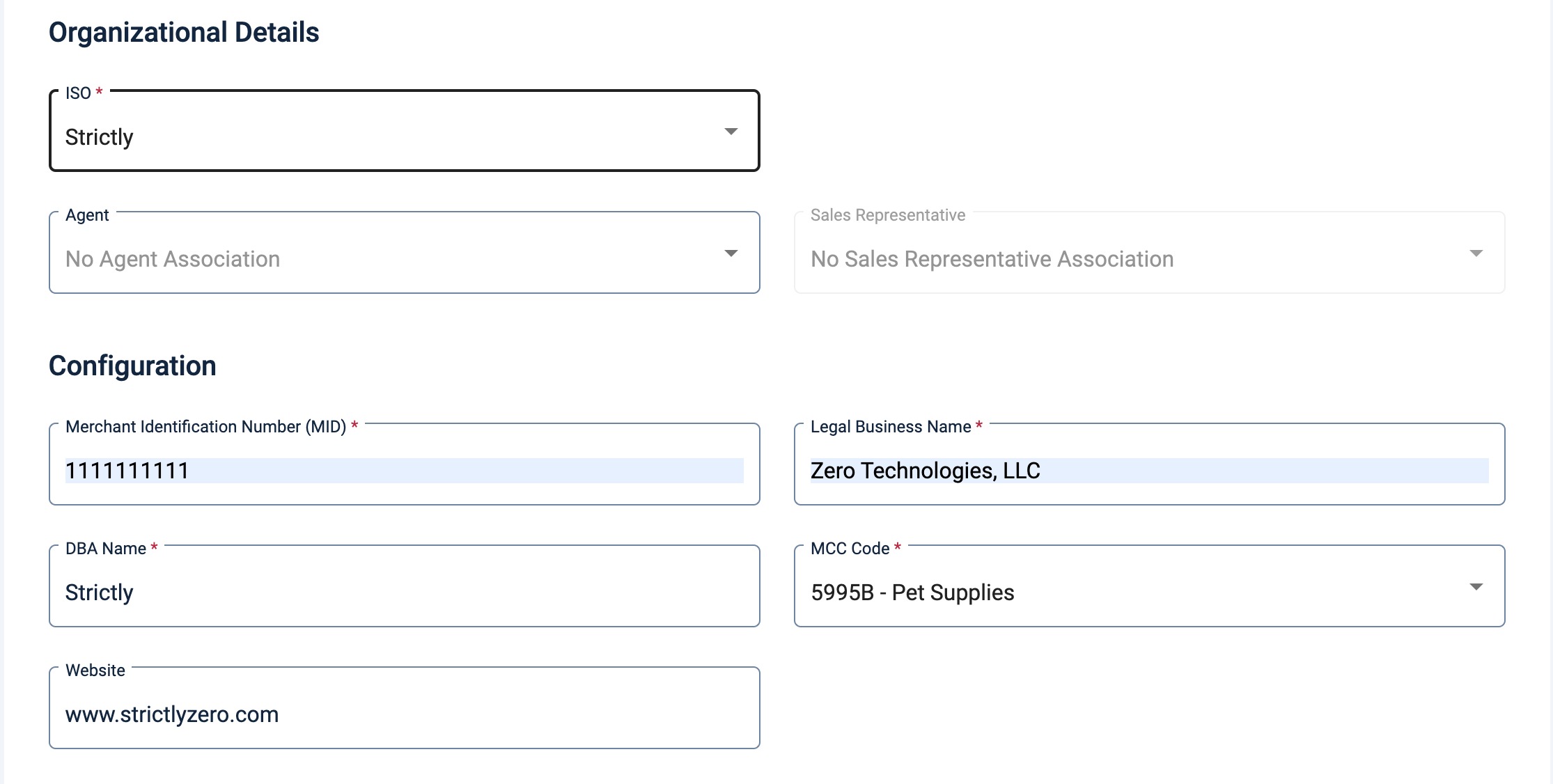
4. Select your Localization Details, Timezone and Currency.

5. Enter merchant Address information.

6. The company contact will be the primary contact for your merchant; the email address entered here will receive the welcome email once boarding is completed.

7. Enter the support's configuration:
- Email information, so customer can contact merchant directly via Email.
- Phone Number information, so customer can contact merchant directly via Phone Call.

8. Once all the * fields are completed, you may click Next.
Billing
9. Enter their Bank Account information - this is applicable to US partners and partners who are set to Bill to Merchant.

10. Enter the Account Owner personal infromation, such as First Name, Last Name and Driver License (Optional).
11. Enter The Billing Addess, if different from business address.
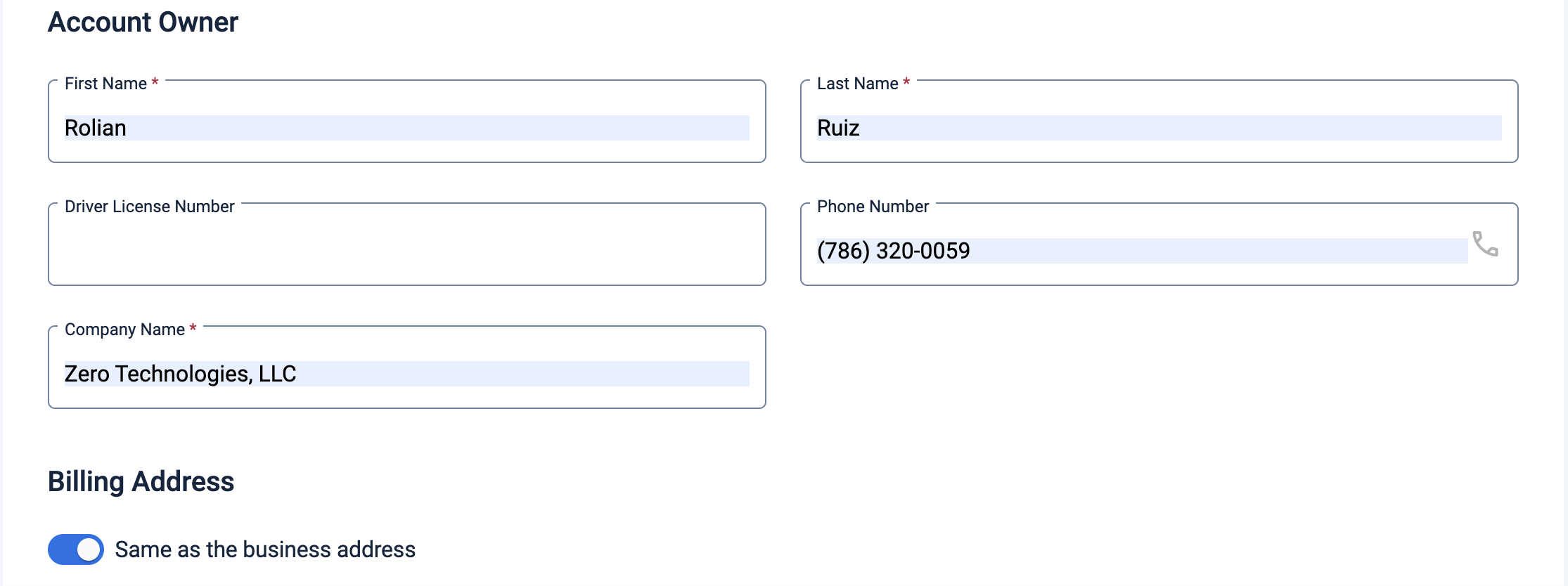
12. Once all the * fields are completed, you may click Next.
Processing Services
13. Select Merchant Account Type Regular.

14. Enable the required processing services; Credit Cards, Electronic Check, Paper Check, Cash, Avvance - Buy now, pay later. Enter settings such as credentials.
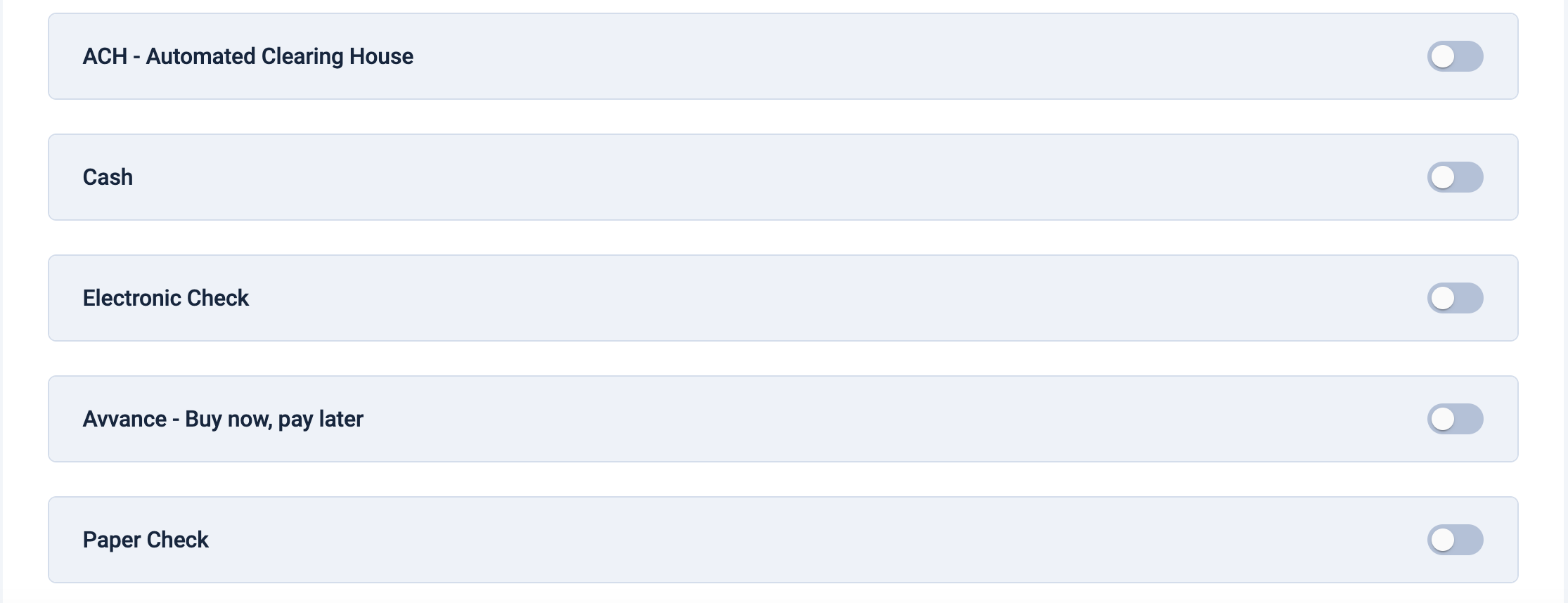
15. Select the Gateway processing platform that your merchant is using from the dropdown (if you do not see the processor in your Processing Services list, send a request to our support team to have it added to your account, please provide your ISO ID and MID with your request).
- Each processor will have their own specific boarding requirements under the Processor Information section. This section is where you will need the VAR sheet (also known as Tear sheet or Parameter sheet) from the Processor for US/CA boarding's.
- For more information on specific US/CA processors, please see Credit Card Processor Onboarding & Requirements.

16. Check of the Card Types (Debit / Credit) your merchant will accept under Payment Types Allowed. Keep in mind the processor will need to have the card scheme configured on their side as well. Note - in the US, UnionPay runs over Discover rails, therefore any processor that supports Discover would support UnionPay.

17. Duplicate Velocity Controls - if duplicate checking is enabled, it will prevent a customer from accidentally submitting the same transaction multiple times. This will check for the same card number and the same amount in the time frame you set in the Duplicate Time Limit field (in seconds). The default duplicate time limit is set to 1200 seconds (20 minutes). You can always come back to this step to turn it off if needed.
- By checking on Merchant can override the duplicate check, this will allow the merchant to ignore this check on a per transaction basis in the merchant’s Virtual Terminal page. They will have the option to check 'Disable Duplicate Check' before hitting the charge button.

18. Once all the * fields are completed, you may click Next.
Modules
19. Enable the required modules; Virtual Terminal, Payment Links, Invoices, Embedded Payments, Orders, Recurrent Payments, Terminals.
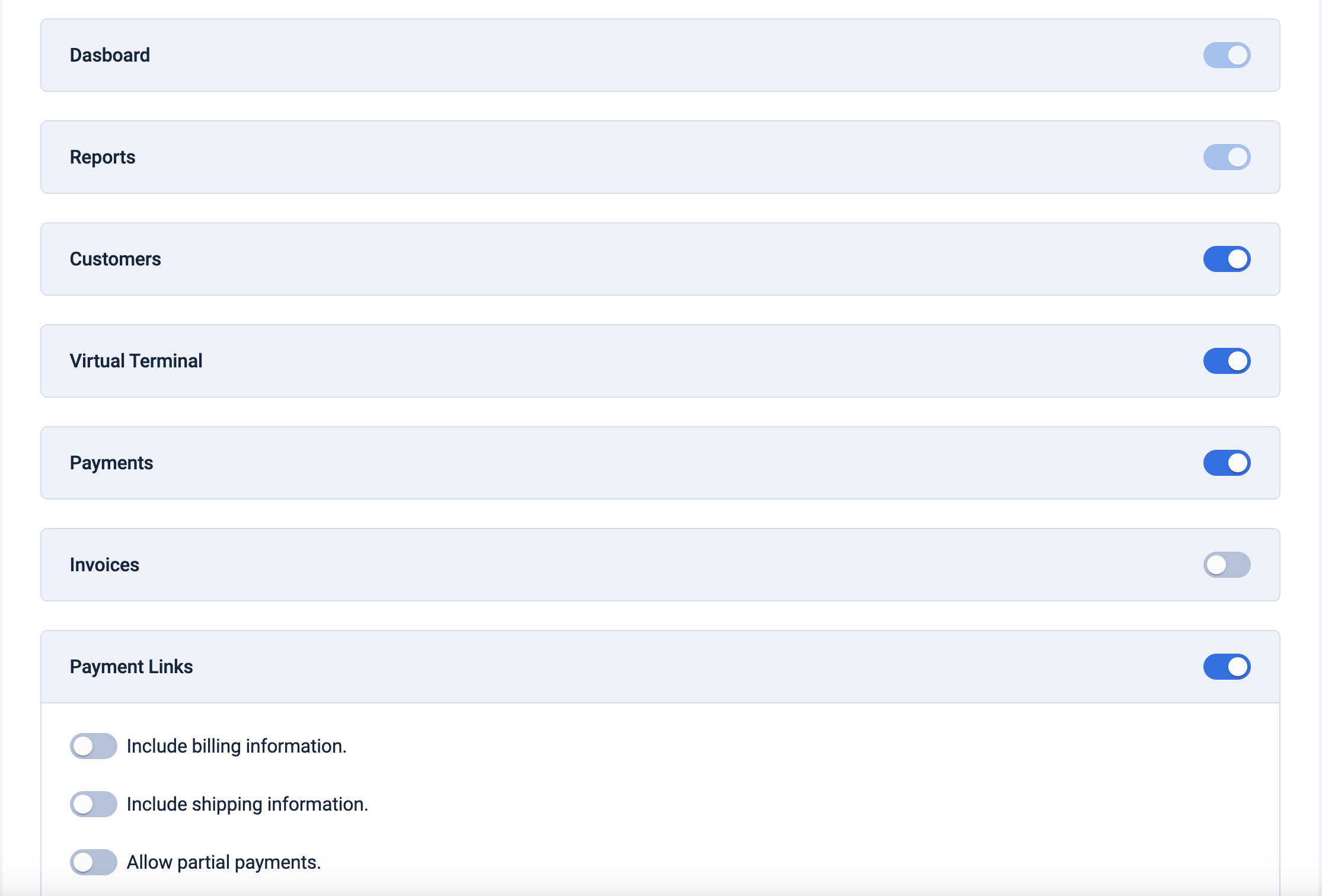
20. Once all the * fields are completed, you may click Next.
Custom Configurations
21. Enables Custom Fields and specify the modules you would like to append this new records; Payments, Invoices, Payment Links, Subscriptions and Terminals.

22. Once all the * fields are completed, you may click Next.
Review
23. Next you will see a summary of the merchant account for review that you've created. This will give you the chance to edit any typos or errors prior to activating the Account and sending the Merchant Welcome Email.
24. The account will be saved, which you can always come back to your list of accounts when you are ready to send the email out to the merchant and activate their account.
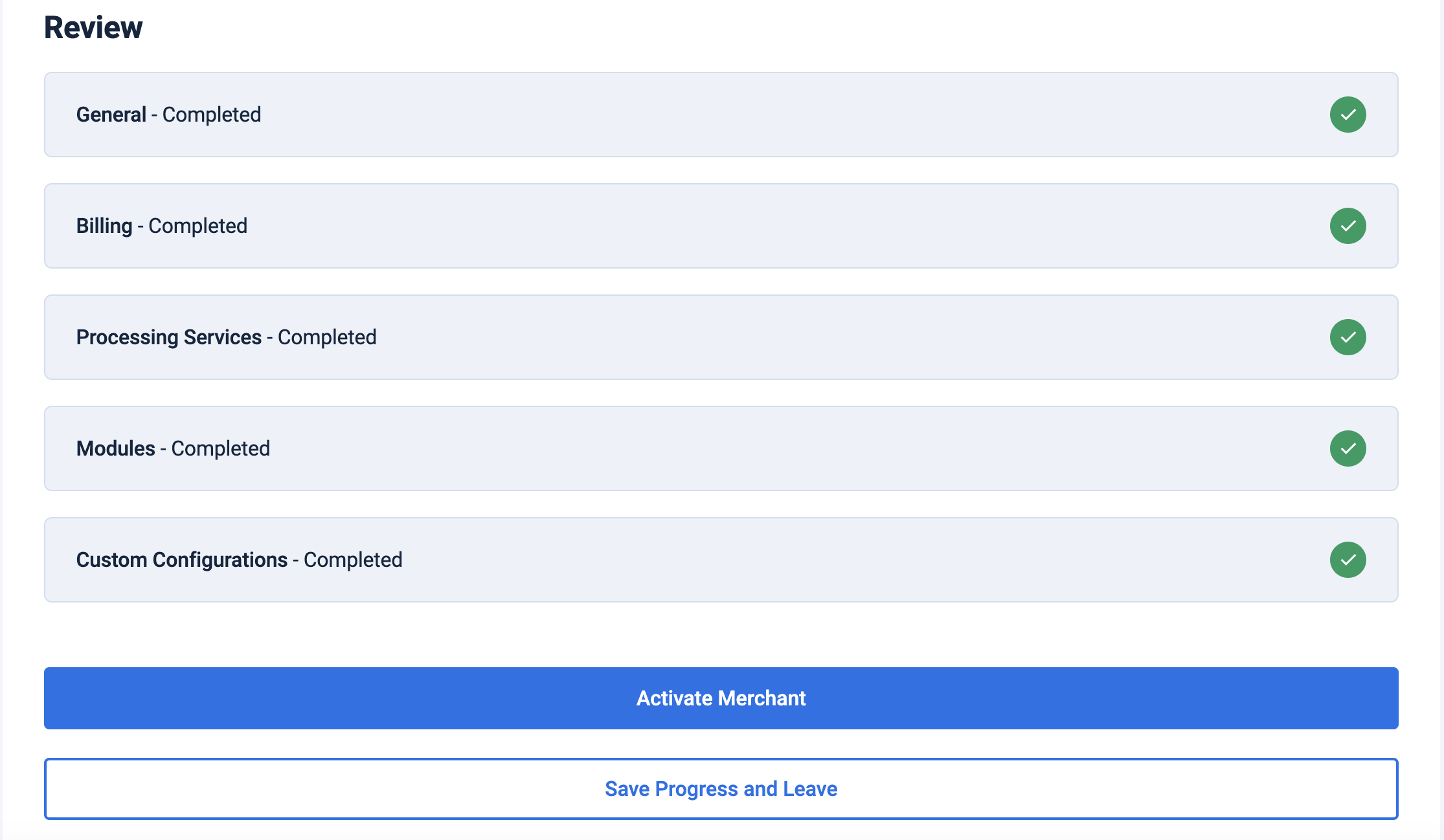
25. Once you are satisfied that what you have entered is complete and correct, click on Activate Merchant, which will send the Welcome email to the merchant.
Was this article helpful?
That’s Great!
Thank you for your feedback
Sorry! We couldn't be helpful
Thank you for your feedback
Feedback sent
We appreciate your effort and will try to fix the article